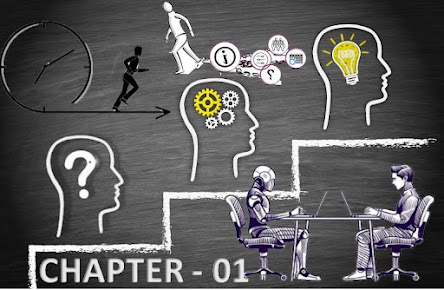All of us, without exception, would love to tame the future and tilt odds in our favor all the time. This lofty aspiration and our incessant effort toward making right choices is what sets us apart from animal species. Decision making is a basic cognitive process of human behavior. Far from perfect, our prowess for decision making stands exposed more than ever in the hyper connected and rapidly changing world we live in.
Decision Intelligence: How can it help?
There is hardly any organization today that does not aspire to power their decisions and actions with intelligence. Enough evidence exists that those who can harness their organizational intelligence and align it to desired outcomes accrue a substantial advantage. Over the decades of automation, significant strides have been made in codifying human experiential knowledge as well as extracting hidden knowledge from transactional data footprints.
The purview of decision intelligence is to explore outcome-focused and human-in-the-loop approaches to decision automation. A decision intelligence system is a man-machine collaborative system designed to enable and mature decision-action capability in an organization. A decision intelligence system plays a dual role:
A Story
In 1961, Col. John Boyd wrote "Aerial Attack Study”, which spoke about the best dogfighting tactics. In dogfights (close-range aerial battles), fighter pilots need to move at high speeds, avoid enemies while tracking them and keeping a contextual knowledge of objectives, terrains, fuel and other variables. His OODA loop was a concept designed for rational thinking in such chaotic situations.
He said that ambiguity
will always be there. Our inability to properly make sense of our changing
reality is the bigger hindrance. When circumstances change, we often fail
to shift our perspective and continue to try to see the world as we feel it should
be. Most important thing is to orient - be connected to reality and act accordingly.
The OODA Loop
The OODA loop (Observe, Orient, Decide, Act) is a four-step approach to decision-making that focuses on filtering available information, putting it in context and quickly making the most appropriate decision while also understanding that changes can be made as more data becomes available.
The strategy is applicable at an individual level as well as an organizational level. It is particularly useful in scenarios where competition is involved and where the ability to react to changing circumstances faster than an opponent leads to an advantage. Many modern environments can be described as volatile, uncertain, complex and ambiguous, or VUCA. Surviving and winning in this type of situation rests upon making better decisions. However, improving the quality of decision-making is something most organizations fail to do.
For example, if a company continues to make choices that do not see a positive return, they are failing to learn from their experiences. The OODA loop acknowledges this habit and provides an approach help make improvements.
OODA Loop Related Terminology
Before the OODA loop can be fully understood, a few related concepts need to be introduced which will aid in understanding it better:
How The OODA Loop Works: The Four Steps
Similar to other
problem-solving methods, the OODA loop is an interactive, iterative process
that entails repeating the cycle, observing and measuring results, reviewing
and revising the initial decision and advancing to the next step. While the
process is not always simple or linear, the four separate steps involved may be
explained in organizational context or individual context as follows:
These phases have been broken out for the purposes of explanation, but in some real world scenarios they might happen in a fraction of a second. The four steps of the OODA Loop work together in a cycle.
Success Of the OODA Loop
Factor 01
One key to the success of the OODA loop is to make it as short as possible, minimizing reaction times in high-stakes situations. In the OODA loop’s simplest form, there is only one stimulus and one response, but that is not always the case. Hick’s Law can be applied to the reaction time of an OODA loop that has more than one stimulus or response, stating that when there are multiple options available in response to a stimulus, reaction time is slowed down.
Factor 02
The ability to make decisions faster than an opponent is important, but it is not only about speed. Tempo is also critical as the ability to rapidly speed up and slow down can generate unpredictability. Being unpredictable makes it difficult for opponents to understand and orientate themselves to what will happen next. Cycling through an OODA loop with more tempo than an opponent gives an organization more control of the environment and a better chance of succeeding.
***To be continued in Chapter 02 (Uses of the OODA Loop, Examples in Business, Alternatives, Decision Intelligence and Technology, Human-Machine Collaboration In Decision Intelligence)
LINK TO CHAPTER - 02
https://conceptsnest.blogspot.com/2022/02/decision-intelligence-frameworks-ooda_18.html
Content Curated By: Dr Shoury Kuttappa









Comments
Post a Comment